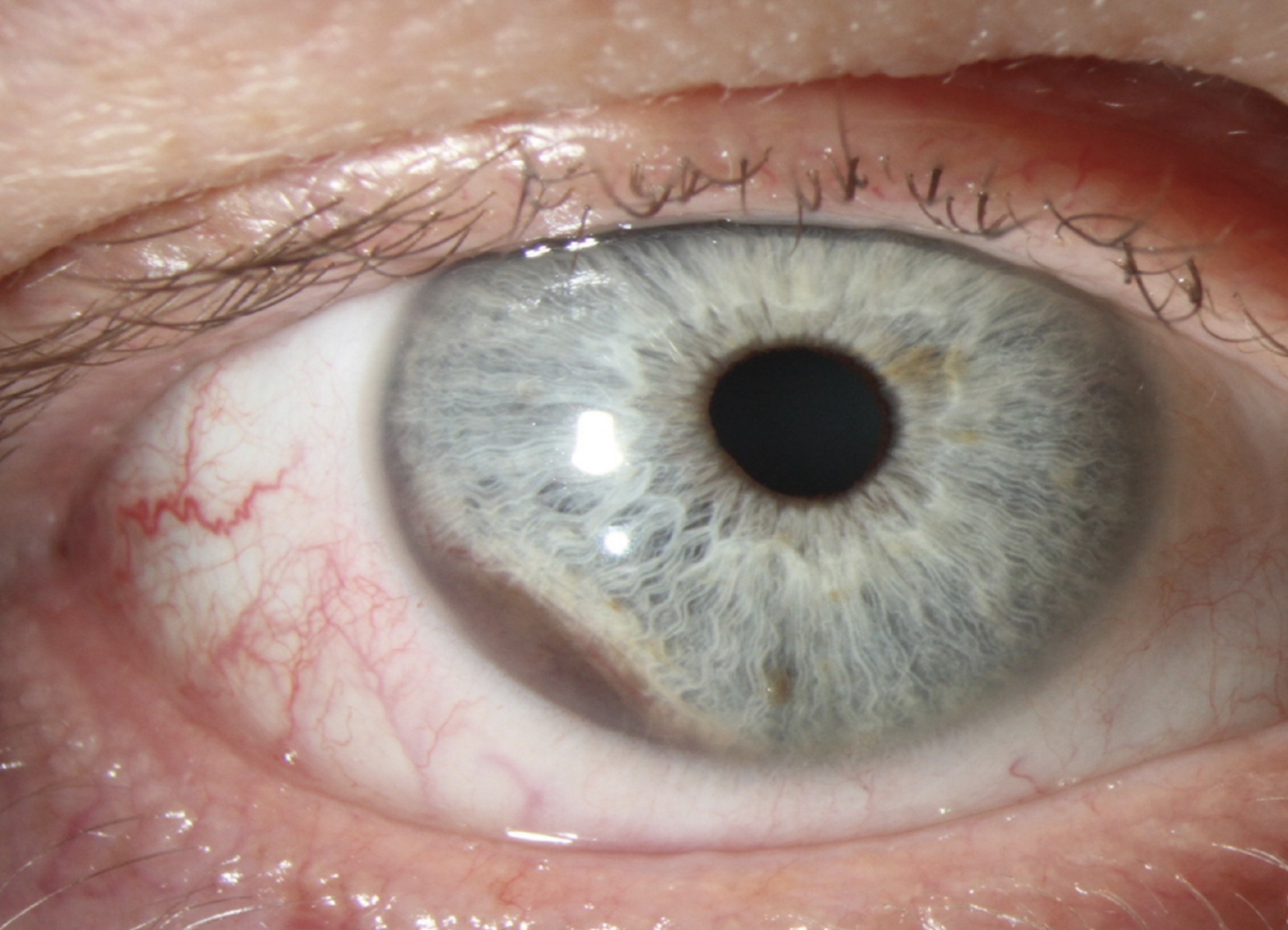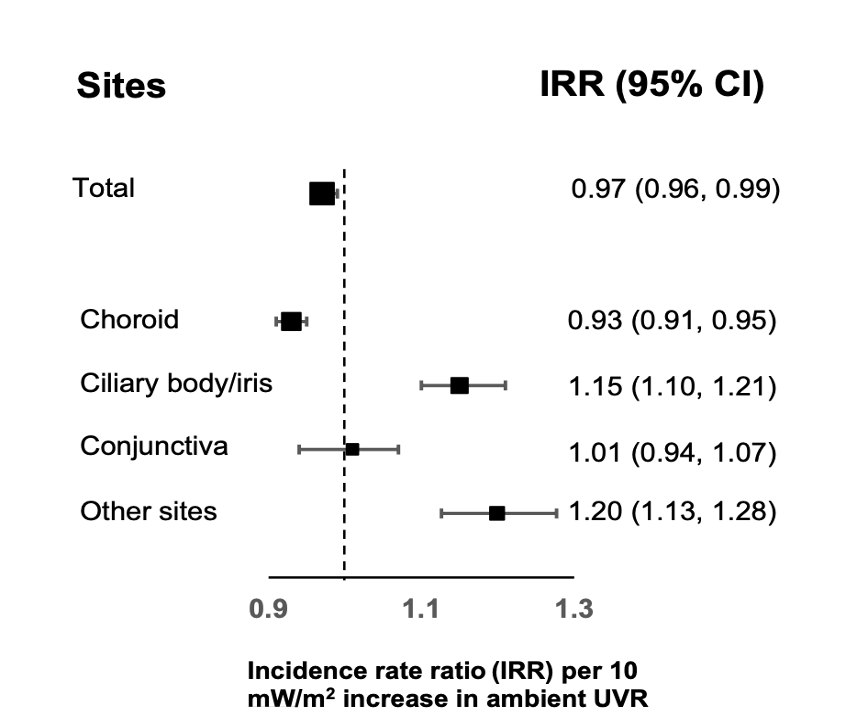 |
| The anterior segment absorbs more ultraviolet radiation than the back of the eye, which may be why this study observed an increased risk of ciliary body/iris melanoma in those living in areas of high exposure. Photo: Jerome Sherman, OD, and Sherry Bass, OD. Click image to enlarge. |
Given ocular melanoma’s high mortality rate and risk of vision loss, developing a better understanding of its risk factors is important to inform monitoring protocols for vulnerable groups. Some that have been previously reported include male sex, older age, light eye color, sun-sensitive skin, higher numbers of cutaneous melanocytic nevi, ocular melanocytosis, certain gene mutations and, lastly, exposure to ultraviolet radiation (UVR), which was the focus of a recent study published in Eye.
Artificial UVR has been associated with increased risks of ocular melanoma in several studies; however, controversy remains surrounding the condition’s association with solar UVR. Additionally, few prior investigations have considered the effect of solar UVR on various parts of the eye, which may have differing exposures to ambient UVR. To strengthen this research, the present study used data from 21 cancer registries in the US to examine the associations between solar UVR and incidence of different anatomical sites of ocular melanoma by sex, age, laterality and race and ethnicity. Ambient UVR exposure was derived from the Total Ozone Mapping Spectrometer database and counties were ranked as Q1 to Q4 (lowest to highest UVR exposure).
The data, which included 18,090 patients diagnosed with ocular melanoma during a 20-year period, showed the following results:
- UVR was not associated with total ocular melanoma—including all anatomical sites—or conjunctival melanoma when comparing Q1 and Q4.
- Among non-Hispanic White individuals, there was an association between ambient UVR and increased risk of ciliary body/iris melanoma.
- Among non-Hispanic White and Hispanic White individuals, there was some evidence of an association between ambient UVR and reduced risk of choroidal melanoma.
The researchers explained in their paper that their “null results for total ocular melanoma were consistent with two studies each that reported no relationships with latitude and modelled UVR exposure for all ocular melanomas.” Other reports have made conflicting observations, though, such as one the researchers described that “suggested a positive association with risks of uveal melanoma for higher occupational sun exposure and lack of eye protection.” Another found that “proximity to the equator was associated with an increased risk in a case-control study of uveal melanoma,” they noted. To state the obvious, the association between UVR and total ocular melanoma remains murky. However, that could be because UVR plays different roles in each anatomical site of ocular melanoma, potentially due to the unique positions of structures within the eye.
“It is generally believed that some UVR of wavelengths between 300nm and 400nm are able to reach the anterior uveal structures of the eye (shorter wavelengths are absorbed by the cornea), while only a very small amount of UVR reaches the posterior of the eye, primarily in older adulthood,” the researchers explained. “These anatomical sites have been suggested to almost completely absorb solar UVR.”
Note that there is potential bias in this cancer registry study due to its exclusion of other potential risk factors for ocular melanoma, which may be useful for future investigations to include. For example, the researchers hypothesized, “Associations between UVR and ocular melanoma may reflect the differences in eye color or skin pigmentation found in populations living at different latitudes.”
In conclusion, the study authors note that this data may “serve as a starting point for understanding the differences in the relationship between UVR and specific anatomical sites.”
 |
| Photo: Arockiaraj BM, et al. Eye. 2024. Click image to enlarge. |
Arockiaraj BM, Cahoon EK, Sargen MR, et al. Ambient ultraviolet radiation and ocular melanoma incidence in the United States, 2000-2019. Eye. February 13, 2024. [Epub ahead of print]. |

